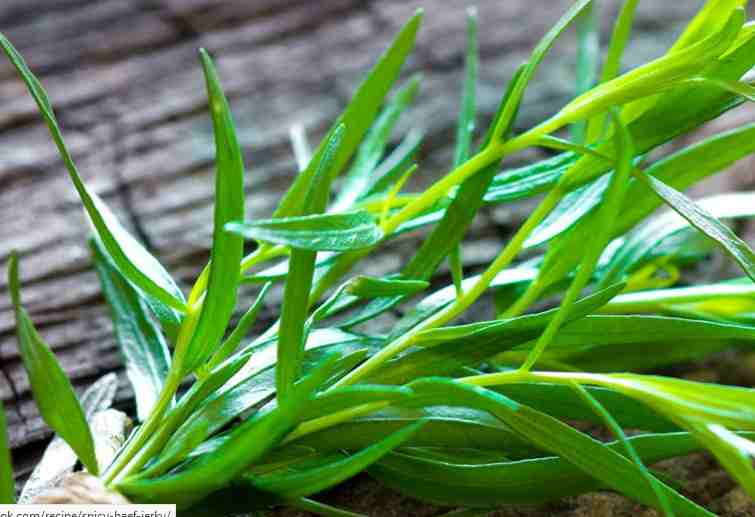For thousands of years, humans have been using herbs for many things, such as medicines and preservatives. But the most popular use is in cooking as herbs help enhance flavor and add color to various types of meals, including desserts. Different kinds of herbs are commonly used in the kitchen today, from rosemary and thyme to oregano and basil. But have you heard of tarragon as one?
If it’s your first time coming across a recipe that requires tarragon and wondering what ingredient that is, then you’re not alone. For seasoned cooks and chefs though, they know what it is and even the appropriate tarragon substitute if they’re running low in supply. But for newbies in the kitchen, it’s an ingredient that may be unheard of. Don’t worry because you will find answers to your questions about this herb in this article.
Contents
What Is Tarragon?
Used in American and French cooking, tarragon is a popular, leafy green herb belonging to the sunflower family. It can be found in North America, Eurasia, and other locations where it can be cultured. The subtle licorice and bittersweet flavor help bring out that fresh, spring taste to chicken, lamb, and other dishes. It does, however, cause different reactions from people who have tasted it the first time. The tarragon leaves and tender sprigs can be used as a garnish to roasted dishes, tossed into sauces, and more. Three varieties are available in the market today namely French, Russian, and Mexican tarragon. But of the three, it’s the French tarragon that’s mostly used as deemed to be the best fit for culinary dishes.
What Are the Benefits of Tarragon to People’s Health?
Tarragon may be known for its flavor and aromatic properties, hence, its popular use in cooking. However, that’s not the only positive thing to know about this herb.
1. Helps improve sleep
Poor health and the risk of developing medical conditions stem from insufficient sleep. Therefore, people who have trouble sleeping may benefit from drinking tea with the said herb as an ingredient. It was the French people who started adding it to their teas and discovered improvements in sleep. The herb belonged to the group of Artemisia plants, which is said to have a sedative effect when tested on mice. It’s important to note that further research still needs to be done to completely test its use in humans for sleep improvement purposes.
2. It provides nutrients beneficial to the human body
Containing manganese, potassium, iron, and other beneficial nutrients, it’s safe to say that tarragon is as useful as a medicine as it is in cooking. Manganese is obtained through people’s diet as the human body can’t produce it and stores it in the liver, bones, brain, and more. It supports bone health, reduces inflammation, and more. Potassium, on the other hand, helps in regulating nerve signals and muscle contractions as well as keeping proper heart function. Iron is a vital mineral used in blood production. Lack of iron leads to anemia, and humans feel weakness and fatigue easily. All these nutrients and more can be obtained by adding tarragon to their dishes and diet.
3. Solution to poor appetite
There are many different reasons why people lose their appetite. It could be due to age, a side effect of medication, depression, infections, or something else. The bottom line is it’s not good for this to continue as it could lead to malnutrition. There are studies done on mice that showed tarragon extract combined with a high-fat diet helped stimulate the subjects’ appetites.
What Is the Difference between Its Two Forms?
Depending on where you’ll be using it, this herb comes in two forms: fresh and dried. The bright green color and long and perky leaves of fresh tarragon differ from the pale green/brownish color and dehydrated appearance of the dried tarragon.
And although both are highly aromatic, the latter has a weaker scent compared to the former. But what it lacks in scent, it makes up with intensity as it’s more potent than the fresh one. Using less dried tarragon will still help you achieve a strong flavor.
Where to Store it?
Dried tarragon may have a longer shelf life, but it’s best to keep it in an airtight container and away from light. Fresh tarragon, on the other hand, needs to be stored in the refrigerator or at room temperature, unlike the dried variety. To keep it for a longer time, clean and pat dry the leaves before wrapping them in a paper towel and placing it in an airtight container.
Conclusion
Flavorful and aromatic, it’s no wonder why the Americans and French people love to add it to the sauces and dishes they make. And after reading about its benefits, you should be convinced why it’s good to add it to your stock of herbs at home. Add it to your meal plan and reap the health benefits it could provide to you and your family.
